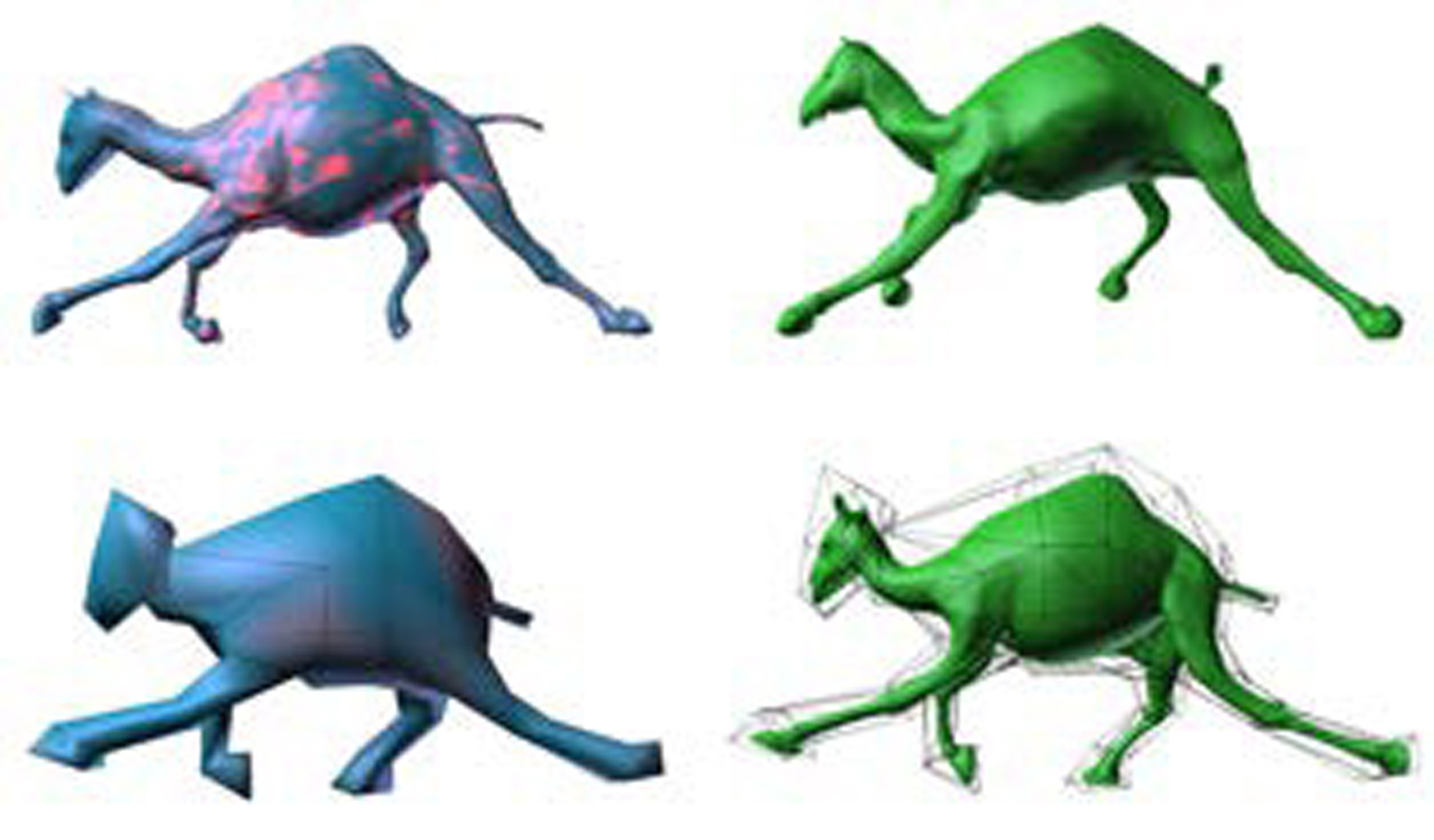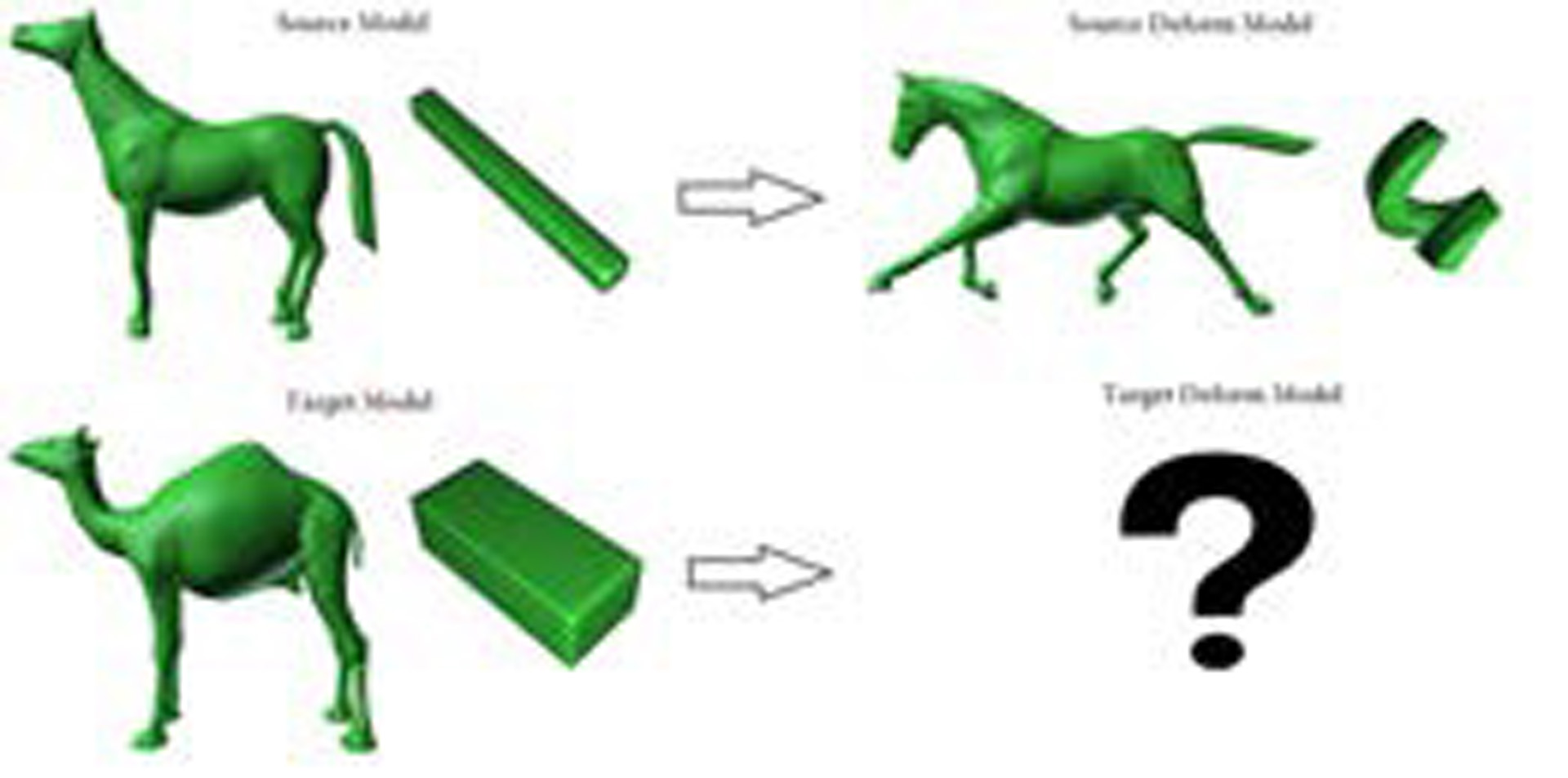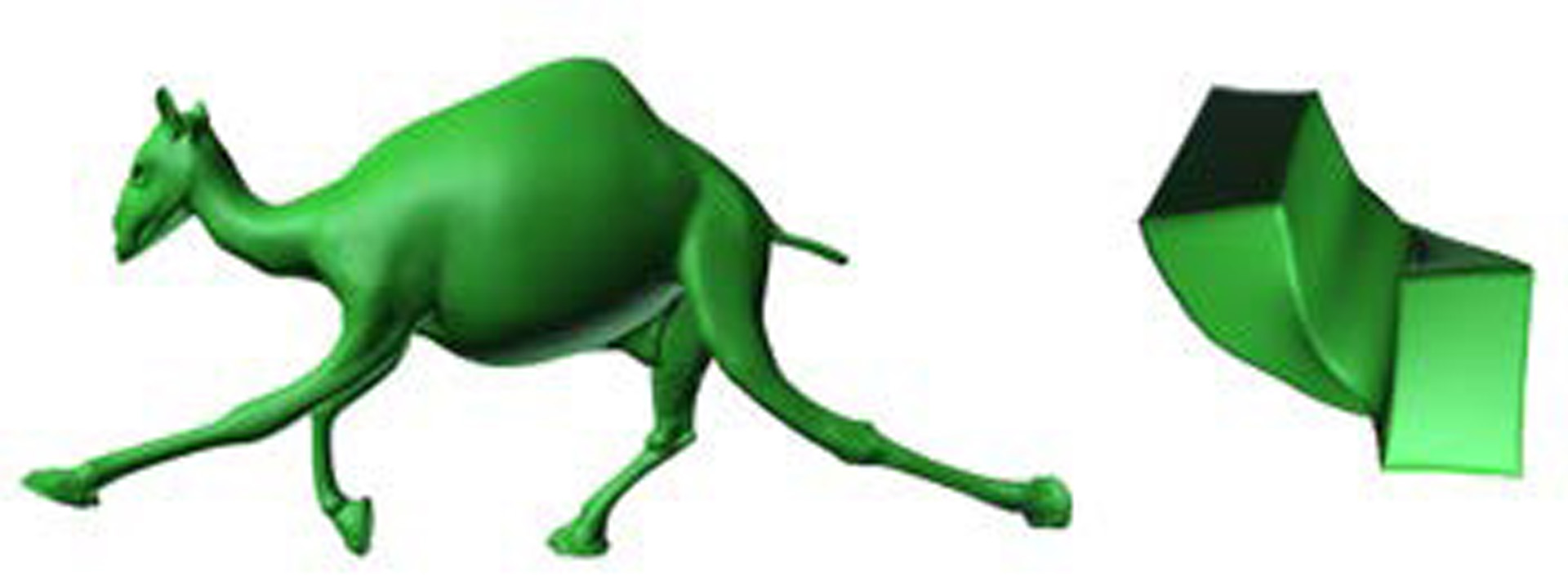“Cage-Based Deformation Transfer Using Mass Spring System” by Tung, Li, Lin and Ouhyoung
Conference:
Type(s):
Entry Number: 24
Title:
- Cage-Based Deformation Transfer Using Mass Spring System
Presenter(s)/Author(s):
Abstract:
Most previous works transfer mesh deformation by solving affine transformations of triangles [Sumner and Popović 2004]. Although the quality is promising, some methods instead try to transfer physical models. Such physical-based methods which generate target deformed models allow plausible physical interaction during de- formation process and post-mesh editing. The system [Yang et al. 2013] automatically construct a mass spring system for source and target models. Then it transfers spring stretchiness ratio of source reference model and source-deformed model to the target reference model. The target model is deformed after solving the force equilibrium. A similar idea works pretty well on mesh interpolation [Ma et al. 2012], where each blend shape model is associated with a mass spring system. However, there are severe collapse problem on the result of [Yang et al. 2013], as shown in Figure 2.
Given target-deformed models edited by artists, we compute the and that of the target models. From the error visualization of the case “horse-camel” in Figure 2, it is clear that the spring ratios are quite different in several parts, e.g., the backside, belly, and joints on limbs. We propose an effective method to tackle the problem. The idea is to perform spring stretchiness ratio transfer on the models of abstraction levels, where the mass spring configurations are more consistent. The fine-level target model is reconstructed by Green Coordinate [Lipman et al. 2008] from coarse-level model, thus completing deformation transfer.
References:
- Lipman, Y., Levin, D., and Cohen-Or, D. 2008. Green coordinates. ACM Transactions on Graphics (Proceedings of ACM SIGGRAPH 2008). 27, 3 (Aug.), 78:1–78:10.
- Ma, W.-C., Wang, Y.-H., Fyffe, G., Chen, B.-Y., and Debevec, P. 2012. A blendshape model that incorporates physical interaction. Computer Animation and Virtual Worlds 23, 3–4, 235–243.
- Sumner, R. W., and Popović, J. 2004. Deformation transfer for triangle meshes. In Proceedings of ACM SIGGRAPH 2004, ACM, SIGGRAPH ’04, 399–405.
- Yang, Y.-H., Ma, W.-C., and Ouhyoung, M. 2013. Deformation transfer based on stretchiness ratio. In Proceedings of ACM SIGGRAPH 2013 Posters, ACM, New York, NY, USA, SIGGRAPH ’13, 3:1–3:1.
Additional Images:

Acknowledgements:
This work is partially funded by NSC 101-2221-E-002-204-MY2 and 102-2622-E-002-013-CC2 (Taiwan).






